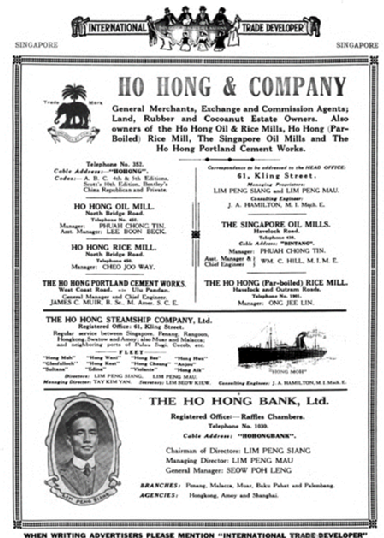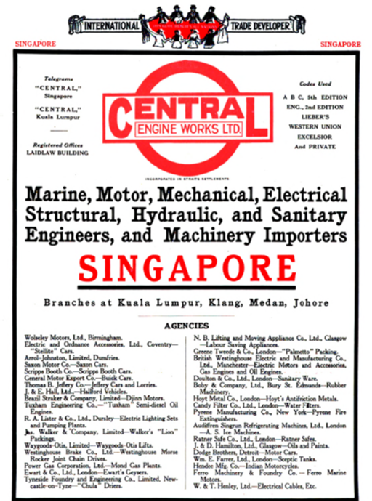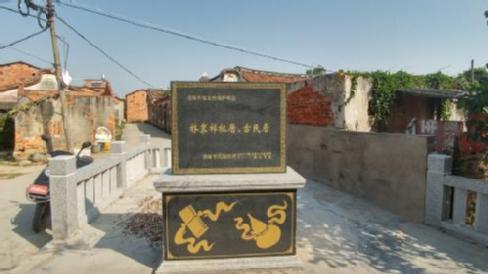Researching Chinese Big Business in the British Straits Settlements
Published: 24 January 2024 - Jeremy Goh
As a fresh Singaporean undergraduate in 2014, I developed an avid interest in businesses and banks owned and operated by the Chinese in colonial Singapore, the capital of the British Straits Settlements (1826-1947). In Singapore and neighbouring Malaysia, major entrepreneurs remain prominent in popular memory, with numerous buildings, roads, subway stations, and scholarships named after them. While their philanthropic projects in education, disaster relief, and welfare are well understood, less is known about their enterprises and banks. This topic is at the heart of my current doctoral research, which examines the lives and careers of Chinese entrepreneurs, as well as the perspectives of common people, who were equally important in the colonial economy as customers and consumers of modern products and services. In this blog I describe my first experience of researching Chinese business.
In 2014, I participated in the ‘Undergraduate Research Experience on Campus’ programme at Nanyang Technological University. This is similar to the University of Warwick’s Undergraduate Research Support Scheme. While I carried out the project, a particular entrepreneur won my attention. He was Lim Peng Siang (Lim being the surname), the boss of the fledging Ho Hong Conglomerate, with interests stretching from oil, ship, and cement manufacturing, to regional shipping and modern banking (see Figures 1 and 2).
 |
Source: International Trade Developer (1919), p. 1050. |
Figure 1. An overview of the Ho Hong industrial conglomerate in colonial Singapore and Southeast Asia. Note the Latin motto of this firm (‘Concordia Et Copia’, or ‘harmony and wealth’), which illustrates Lim’s vision of ‘harmony and wealth’ through enterprise. This Latin motto reflects the cosmopolitan environment in which Lim operated, and his aim of reaching a broader clientele beyond the Chinese communities.
 |
Source: International Trade Developer (1919), p. 1048 |
Figure 2. An advertisement of Central Engine Works, owned and run by Lim. Headquartered in Singapore, this company had branches in British Malaya, and agencies located across Great Britain, in cities such as London, Glasgow, Birmingham, and Coventry.
What struck me was not only the scale of Lim’s enterprises, but also their industrial nature. This seemed unusual as the history of Singapore and Southeast Asia usually suggests that industrialisation took off only after decolonisation, with the committed support of newly independent states.[1] My curiosity led me to research the career of Lim, in what in 2018 became my undergraduate honours thesis, and later, in 2023, a journal article co-written with my former supervisor.[2]
Drawing upon hitherto untapped archival sources, this article used Lim Peng Siang's business career to show that in Southeast Asia, industrialisation and modernisation were underway before the Second World War. Lim’s companies were ‘modern’ in many respects: in the economic sectors and industries in which they were situated, in Lim’s emphasis on manufacturing, in his business methods, institutions, and organisational forms, and in the professional managerial expertise that he adopted. At the same time, family and parochial ancestral hometown ties remained crucial as he straddled colonial Southeast Asian and Southern China environments, alongside the emerging force of Chinese nationalism. His story shows the potential of situating Southeast Asian Chinese business and entrepreneurial histories within the broader nexus of modern industrial capitalism, colonialism, and globalisation, moving beyond the ethno-cultural frames of Chinese-ness and Chinese nationalism, as well as simplistic traditional–modern and Chinese-versus-Western dichotomies.[3]
Navigating the Archives
Research on Lim took me to archives in Singapore, Hong Kong, and China. At these archives, I accessed files such as colonial government documents, corporate records, business directories, wills, and chambers of commerce papers, in English and Chinese. Particularly in Singapore, I benefited from the constructive advice provided by archivists, librarians, colleagues, and independent historians. I got to know them not merely through introductions from my professors, but also by initiating conversations with them at the archives, libraries, and networking events such as academic seminars, conferences, and workshops. It was crucial to build up these relationships as they directed me to useful archival files, sources of information, and individuals for oral interviews. Broadening my networks has also opened new possibilities and opportunities as I saw how my research might overlap and contribute to the work of my colleagues and collaborators. A product that arose from these collaborations was a chapter that was published as part of a major volume commemorating Singapore’s bicentennial in 2019.[4]
Accessing government files or files held by government agencies in Singapore requires time. As stated on the website of the National Archives of Singapore (NAS), ‘government records may take upwards of [more than] 12 weeks as the agency in charge of the records must review and approve their release’.[5] This means that it may take months before a user is allowed access to governmental records. There is a separate process if users wish to make copies of records, and approval is not automatic.
Considering this, researchers (including myself) usually submit requests to view records at the NAS way ahead of time. Due to a potentially lengthy period of time needed to obtain permission to photograph documents, I devoted a substantial amount of time to reading and taking notes while at the archive itself. The time and permission needed to access certain files at the NAS generated considerable uncertainty over my project as I doubted whether I could complete my thesis in time. This uncertainty pushed me to consider alternative sources such as reports, newspapers, periodicals, biographies, and commemorative publications (‘grey literature’[6]), as well as oral history.[7] Such sources can be accessed in physical libraries in Singapore, online databases like the HaithiTrust and NewspaperSG (an online resource containing over 200 Singapore and Malaya newspapers), as well as social media which is increasingly being used by Southeast Asian historians to create inclusive narratives.[8] Accessing these alternative sources not only reduced the uncertainty over state archives, as they were also important in their own right by providing perspectives beyond official narratives.
Fieldwork
My article also drew upon fieldwork conducted in China, in the coastal Fujian province. This opportunity arose when my supervisor kindly introduced me to relevant contacts in Singapore and China. With the guidance of these contacts in Fujian, I visited the ancestral village of Lim Peng Siang, in Longhai (see Figures 3 and 4), and interacted with his descendants from different branches of the family. Fieldwork and research in Fujian enabled me to better appreciate both Lim’s diasporic background, and the transnational and regional scale of his enterprises and philanthropic projects, which was formally acknowledged by the President of the Republic of China in 1915 (see Figure 5). The embeddedness of his career and life in China and colonial Southeast Asia complicated my understanding of the making of ‘Chinese business’, and in particular, the diversity of ‘Chineseness’ in terms of ethnicity and identity.[9] This was clear from how Lim, like his contemporaries, straddled between the identities of a British subject and Chinese national as he operated in different geographical spaces. An understanding of the diversity of such identities is key in comparing Chinese entrepreneurs like Lim with his counterparts based in China and other parts of the world. It was my experience of doing fieldwork in China that enabled me to develop this understanding of the complexity surrounding Lim’s hybrid identities.
Figure 3
 |
Source: Photo by author. |
Figure 4
 |
Source: Photo by author. |
Figures 3 and 4. The ancestral village of Lim Peng Siang in Longhai, Fujian province, China.
Figure 5
 |
Source: Photo by author. |
Figure 5. A plaque awarded to Lim Peng Siang by President of the Republic of China Yuan Shikai, November 1915. The Chinese characters on the plaque (jí gōng hào yì) commend Lim for being enthusiastic about public welfare and his initiative in helping people.
Moving Forward
My undergraduate project on Lim was key in providing me a foundation, and more importantly, passion, in undertaking historical research. I am very grateful to my professors in Singapore who supported me in this endeavour, and worked with me on getting my work published. In this project, I learnt the importance of collaboration and networking with fellow colleagues and stakeholders at an early stage, as well as the vital lesson of having alternative plans on archives that I plan to visit and the sources which I hope to consult.
As I worked on my article on Lim, I realised how poorly scholars understand financing and banking in the Straits Settlements, particularly during the first half of the twentieth century. Hence, instead of businesses, banks and finance became the focus of my doctoral research. I hope to understand how they contributed actively to the growing economic integration of a region that is wrongly thought to be peripheral to the global economy. I seek to build an inclusive narrative that includes not only the elite bankers, entrepreneurs, and politicians, but also the perspectives of common people who were part of the capitalist economy and society as customers and consumers of modern banking and finance. Ultimately, I aim to connect this lesser-known history of colonial Southeast Asian banking and finance with ongoing conversations in the global histories of capitalism and finance.
Biography
Jeremy Goh is a first-year PhD student in History at the University of Warwick. He was previously Research Associate at the Nanyang Centre for Public Administration in Nanyang Technological University, Singapore. He completed his MA (Research) in Global and Interdisciplinary History at the same university. His interests lie in business and financial history, Chinese overseas, capitalism, and transnationalism, and, more generally, Southeast Asia’s past and present.
.
.
.
.
.
.
.
.
.
.
.
.
.
.
.
.
.
.
.
[1] Rajah Rasiah and Ai Yun Hing. ‘Industrializing Southeast Asia.’ Journal of the Asia Pacific Economy, 14(2) (2009), 107-115. DOI: 10.1080/13547860902785948
[2] Jeremy Goh. ‘Modern enterprises, multiple entanglements: an exploration of Lim Peng Siang’s business career and social activities in colonial Singapore and Fujian (1904–1941).’ Final-Year Project (2018), History Programme, Nanyang Technological University, Singapore. https://hdl.handle.net/10356/73546; Jeremy Goh and Keng We Koh. Industrialisation and Chinese Big Business in Colonial Singapore, Malaya, and China: The Transnational Enterprises of Lim Peng Siang (1904–41). Journal of Southeast Asian Studies, 54(1) (2023), 89-115. DOI:10.1017/S002246342300019X
[3] Hong Liu and Jeremy Goh. ‘Emerging business transnationalism in Singapore and China: governance, networks, and strategies.’ Asia Pacific Business Review, Online First (2022). DOI: 10.1080/13602381.2022.2136232
.
.
[4] Jeremy Goh. 'Singapore Chinese Chamber of Commerce and Industry: An Institution in Transition.' In Chong Guan Kwa and Bak Lim Kua eds. A General History of the Chinese in Singapore (Singapore: World Scientific, 2019), 345-359. DOI: 10.1142/9789813277649_0017
[5] ‘Frequently Asked Questions.’ National Archives of Singapore, https://www.nas.gov.sg/erequest/faq (accessed 15 January 2024)
[6] C. P. Auger. Information Sources in Grey Literature: Fourth Edition. London: Bowker-Saur, 1998.
[7] Kah Seng Loh and Jeremy Goh. ‘Semi‑archives and interim archives: a history of the National Wages Council in Singapore.’ Southeast Asian Studies, 11(3) (2022), 427‑449. DOI: 10.20495/seas.11.3_427
[8] Kah Seng Loh et al. Theatres of Memory: Industrial Heritage of 20th Century Singapore. (Singapore: Pagesetters, 2021).
[9] Na Ren and Hong Liu. ‘Traversing between transnationalism and integration: Dual embeddedness of new Chinese immigrant entrepreneurs in Singapore.’ Asia and Pacific Migration Journal, 24 (3) (2015), 298-326. DOI: 10.1177/0117196815594719
.
.
